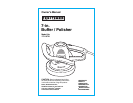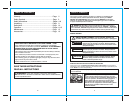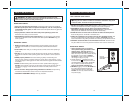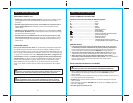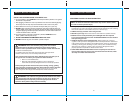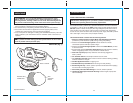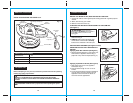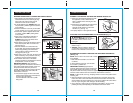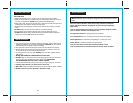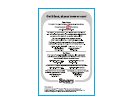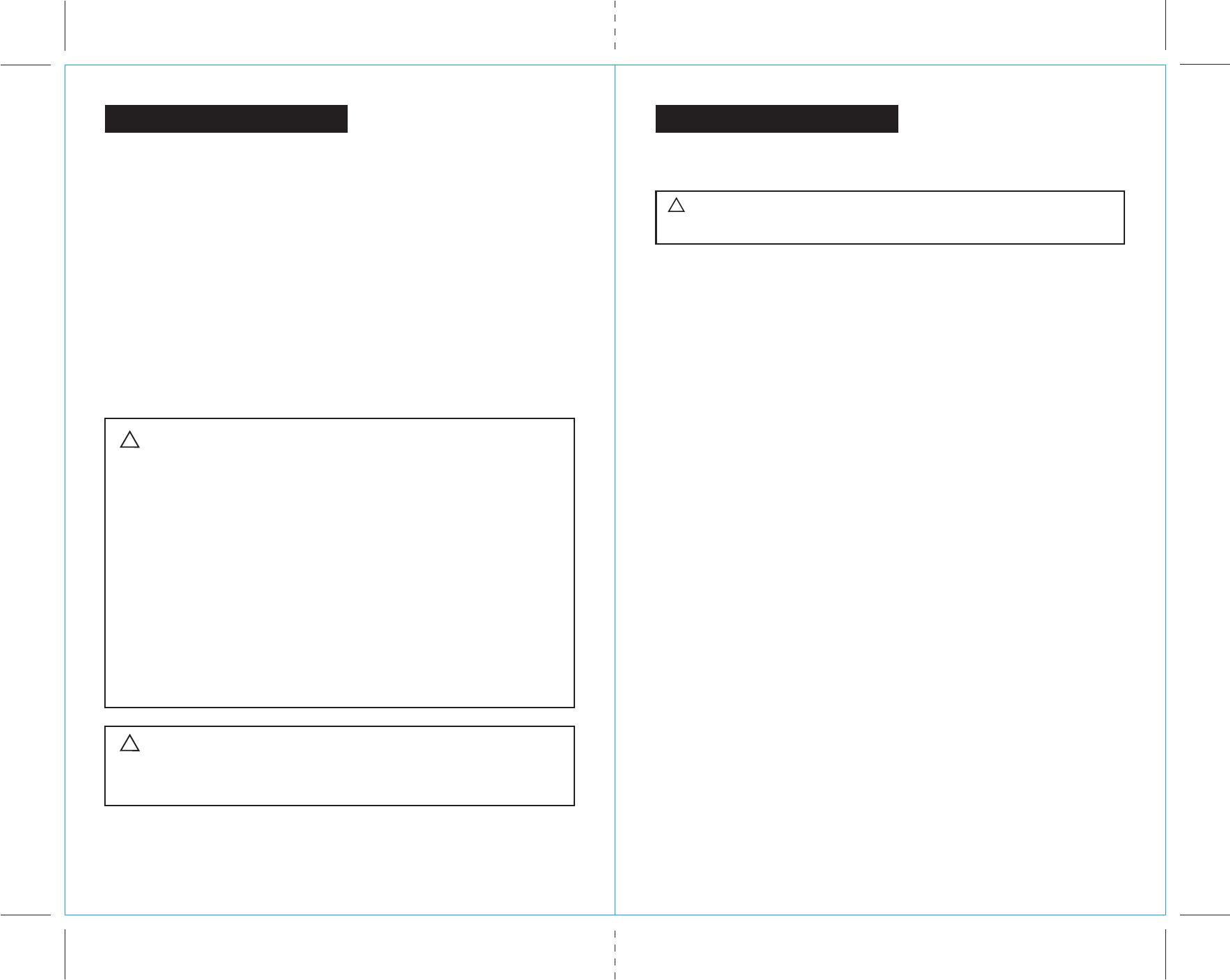
8
9
SAFETY INSTRUCTIONS cont. SAFETY INSTRUCTIONS cont.
SAFETY RULES FOR BUFFER / POLISHERS cont.
6. To avoid splashing wax, ALWAYS start and stop the buffer / polisher on or against
the surface to be polished.
7. After plugging in extension cord, loop extension cord over tool’s stub length plug.
Then wrap hook and loop strip around extension cord to secure it in place.
8. Place extension cord over your shoulder to keep it safely out of your way.
9. DO NOT apply excessive pressure against the work surface with this tool. The
random orbital motion feature on this tool will perform better when less pressure
is applied. Applying excessive pressure will slow the random orbital motion and
reduce the effectiveness of the tool.
10. To prolong the life of the pad on the buffer / polisher, ALWAYS store the
buffer / polisher with the pad face up.
11. DO NOT USE ABRASIVE COMPOUNDS WITH THIS TOOL.
12. DO NOT immerse any part of the buffer / polisher in liquid.
1. Know your power tool. Read operator’s manual carefully. Learn the applications
and limitations, as well as the specific potential hazards related to this tool. Following
this rule will reduce the risk of electric shock, fire or serious injury.
2. ALWAYS wear eye protection when using this tool.
3. PROTECT your lungs. Wear a face mask or dust mask if the operation is dusty.
4. INSPECT the tool cords periodically and if damaged have them repaired
at your nearest Sears Service Center. ALWAYS BE AWARE of the cord location
when operating your tool.
5. ALWAYS check the tool for damaged parts. Before further use of the tool,
a guard or other part that is damaged should be carefully checked to determine if
it will operate properly and perform its intended function. Check for misalignment
or binding of moving parts, breakage of parts, and any other condition that may
affect the tool’s operation. A guard or other part that is damaged should be
properly repaired or replaced at a Sears Service center.
6. SAVE THESE INSTRUCTIONS. Refer to them frequently and use them to
instruct others who may use this tool. If someone borrows this tool, make
sure they have these instructions also.
ADDITIONAL RULES FOR SAFE OPERATION
WARNING:
BE SURE to read and understand all instructions.
Failure to follow all instructions listed below may result in electric shock,
fire and /or serious personal injury.
!
WARNING:
Some dust created by using power tools contains
chemicals known to the State of California to cause cancer and birth
defects or other reproductive harm. Some examples of these chemicals are:
• Lead from lead-based paints.
• Crystalline silica from bricks and cement and other masonryproducts.
• Arsenic and chromium, from chemically treated lumber.
Your risk from these exposures varies, depending upon how often you do
this type of work. To reduce your exposure to these chemicals:
• Work in a well-ventilated area.
• Work with approved safety equipment, such as those dust
masks that are specially designed to filter out microscopic particles.
Avoid prolonged contact with dust from power sanding, sawing, grinding,
drilling and other construction activities. Wear protective clothing and wash
exposed areas with soap and water. Allowing dust to get into your mouth,
eyes, or lay on the skin may promote absorption of harmful chemicals.
!
WARNING:
Use of this tool can generate and/or disburse dust, which
may cause serious and permanent respiratory or other injury. Always use
NIOSH/OSHA approved respiratory protection appropriate for the dust
exposure. Direct particles away from face and body.
!



